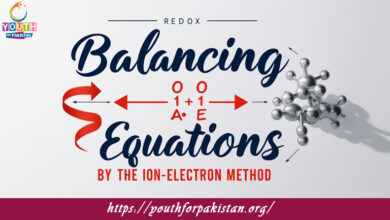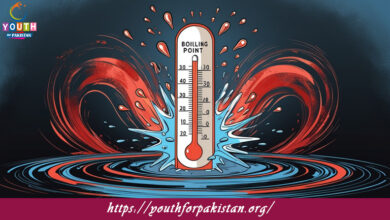Chemical Bonding MDCAT MCQs with Answers

Welcome to the Chemical Bonding MDCAT MCQs with Answers. In this post, we have shared Chemical Bonding Multiple Choice Questions and Answers for PMC MDCAT 2024. Each question in MDCAT Chemistry offers a chance to enhance your knowledge regarding Chemical Bonding MCQs in this MDCAT Online Test.
The type of bond formed by the sharing of electron pairs between two atoms is called:
a) Ionic bond
b) Covalent bond
c) Metallic bond
d) Hydrogen bond
Which of the following is an example of an ionic bond?
a) H₂O
b) NaCl
c) Cl₂
d) CH₄
The bond formed by the transfer of electrons from one atom to another is known as:
a) Covalent bond
b) Ionic bond
c) Metallic bond
d) Van der Waals bond
In a covalent bond, electrons are:
a) Transferred from one atom to another
b) Shared equally between two atoms
c) Delocalized over a lattice of metal atoms
d) Shared unequally between two atoms
The bond angle in a water molecule (H₂O) is approximately:
a) 90°
b) 104.5°
c) 120°
d) 180°
The bond formed between two metal atoms in a metallic solid is called:
a) Ionic bond
b) Covalent bond
c) Metallic bond
d) Hydrogen bond
Which of the following elements would likely form a covalent bond with hydrogen?
a) Sodium
b) Calcium
c) Chlorine
d) Potassium
The lattice energy of an ionic compound is a measure of:
a) Bond strength
b) Atomic radius
c) Molecular weight
d) Bond length
In which type of bond do electrons move freely throughout the metal lattice?
a) Covalent bond
b) Ionic bond
c) Metallic bond
d) Hydrogen bond
A bond between two non-metal atoms is typically:
a) Ionic
b) Covalent
c) Metallic
d) Van der Waals
The molecule with a linear shape and bond angles of 180° is:
a) Methane (CH₄)
b) Ammonia (NH₃)
c) Carbon dioxide (CO₂)
d) Water (H₂O)
Which of the following molecules contains a triple bond?
a) Ethylene (C₂H₄)
b) Acetylene (C₂H₂)
c) Methane (CH₄)
d) Ethane (C₂H₆)
The property of metals that allows them to conduct electricity is due to:
a) Ionic bonding
b) Covalent bonding
c) Metallic bonding
d) Hydrogen bonding
In a polar covalent bond, the shared electrons are:
a) Shared equally
b) Unequally distributed
c) Completely transferred
d) Delocalized
The bond order in a molecule with a double bond is:
a) 1
b) 2
c) 3
d) 4
Which of the following is a property of ionic compounds?
a) High melting and boiling points
b) Electrical conductivity in solid state
c) Malleability and ductility
d) Low solubility in water
The shape of a methane (CH₄) molecule is:
a) Linear
b) Trigonal planar
c) Tetrahedral
d) Octahedral
The principle that states that orbitals in a molecule are filled with electrons to minimize repulsion is:
a) VSEPR theory
b) Aufbau principle
c) Hund’s rule
d) Pauli exclusion principle
The type of bond formed when two atoms share three pairs of electrons is called:
a) Single bond
b) Double bond
c) Triple bond
d) Quadruple bond
The energy required to break one mole of a covalent bond in a molecule is known as:
a) Lattice energy
b) Bond dissociation energy
c) Enthalpy of formation
d) Ionization energy
A molecule with a tetrahedral shape and four single bonds is:
a) Ammonia (NH₃)
b) Methane (CH₄)
c) Water (H₂O)
d) Carbon dioxide (CO₂)
The bond angle in an ammonia (NH₃) molecule is approximately:
a) 90°
b) 104.5°
c) 120°
d) 180°
In a molecule with resonance structures, the actual bonding is best described as:
a) A single, fixed bond
b) An average of the resonance structures
c) A completely new bond type
d) An ionic bond
Which of the following molecules is nonpolar?
a) HCl
b) CH₄
c) H₂O
d) NH₃
The property of a substance to form a crystalline lattice structure is characteristic of:
a) Covalent bonds
b) Ionic bonds
c) Metallic bonds
d) Van der Waals forces
The bond order of a molecule with one sigma bond and two pi bonds is:
a) 1
b) 2
c) 3
d) 4
Which of the following bonds is the strongest?
a) Single bond
b) Double bond
c) Triple bond
d) Quadruple bond
The ability of an atom to attract electrons in a bond is called:
a) Electronegativity
b) Electron affinity
c) Ionization energy
d) Atomic radius
The type of bond present in a metal lattice that involves delocalized electrons is called:
a) Ionic bond
b) Covalent bond
c) Metallic bond
d) Hydrogen bond
The shape of a molecule with three bonding pairs and one lone pair is:
a) Tetrahedral
b) Trigonal pyramidal
c) Trigonal planar
d) Linear
In which of the following does hydrogen bonding occur?
a) NaCl
b) H₂O
c) CH₄
d) O₂
The octet rule states that:
a) Atoms tend to lose electrons to achieve eight electrons in their outer shell
b) Atoms tend to gain or lose electrons to achieve eight electrons in their outer shell
c) Atoms tend to share electrons to achieve eight electrons in their outer shell
d) Atoms tend to form ionic bonds to achieve eight electrons in their outer shell
The bond between carbon and hydrogen in methane (CH₄) is:
a) Ionic
b) Polar covalent
c) Nonpolar covalent
d) Metallic
A molecule with two central atoms and no lone pairs on the central atoms has a:
a) Bent shape
b) Linear shape
c) Trigonal planar shape
d) Tetrahedral shape
The VSEPR theory is used to predict:
a) Bond strengths
b) Molecular shapes
c) Bond lengths
d) Electron affinities
The presence of lone pairs on the central atom of a molecule usually results in:
a) A linear shape
b) A tetrahedral shape
c) A bent shape
d) A trigonal planar shape
The bond order of a molecule with two bonds and one bond pair is:
a) 1
b) 1.5
c) 2
d) 3
In a molecule with a tetrahedral geometry, the bond angles are:
a) 90°
b) 104.5°
c) 120°
d) 180°
The bond strength generally increases with:
a) Increasing bond length
b) Increasing number of shared electron pairs
c) Increasing atomic radius
d) Decreasing bond order
The type of bonding in diamond, where each carbon atom is bonded to four other carbon atoms, is:
a) Ionic bonding
b) Metallic bonding
c) Covalent bonding
d) Hydrogen bonding
If you are interested to enhance your knowledge regarding Physics, Chemistry, Computer, and Biology please click on the link of each category, you will be redirected to dedicated website for each category.





